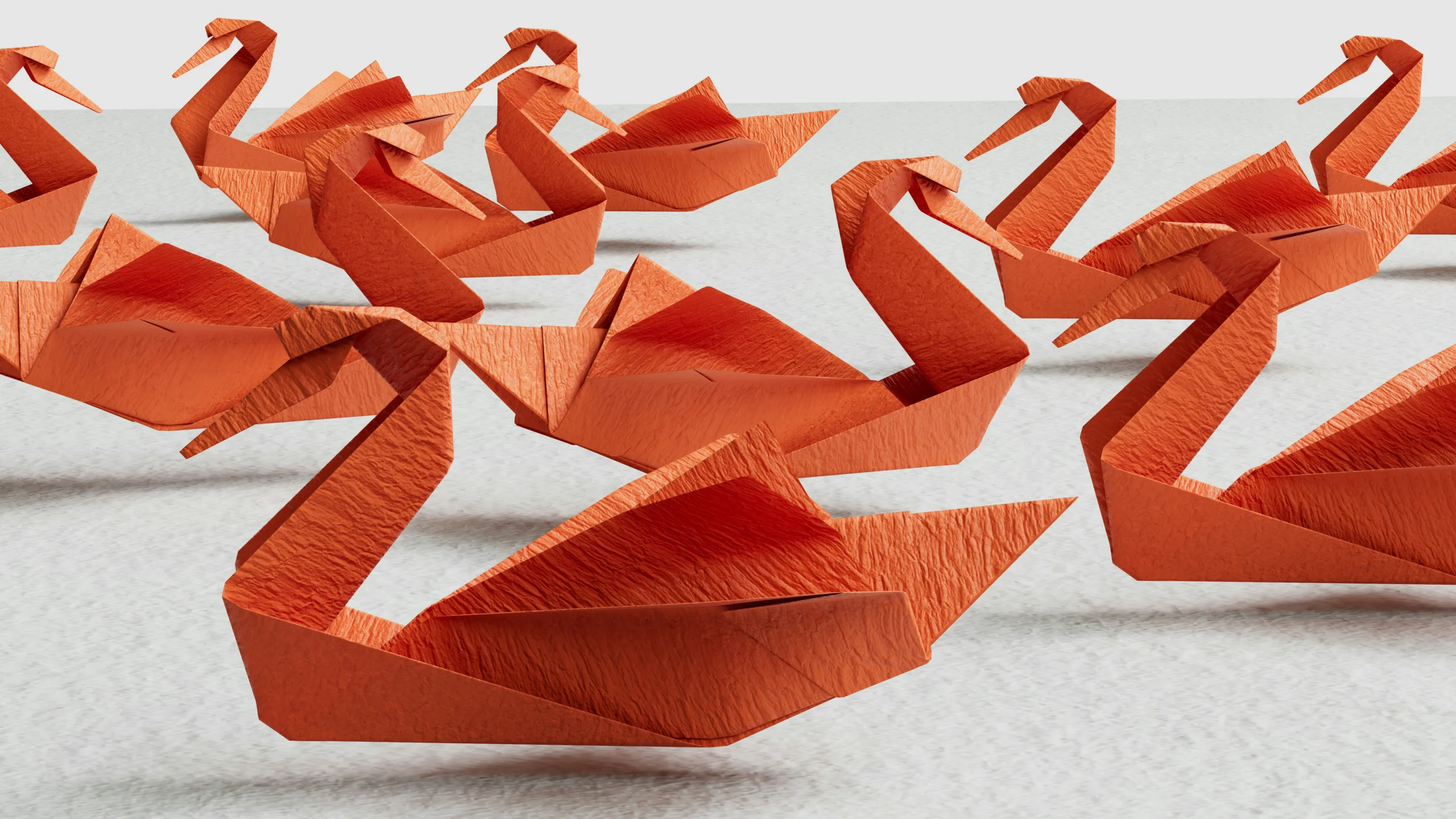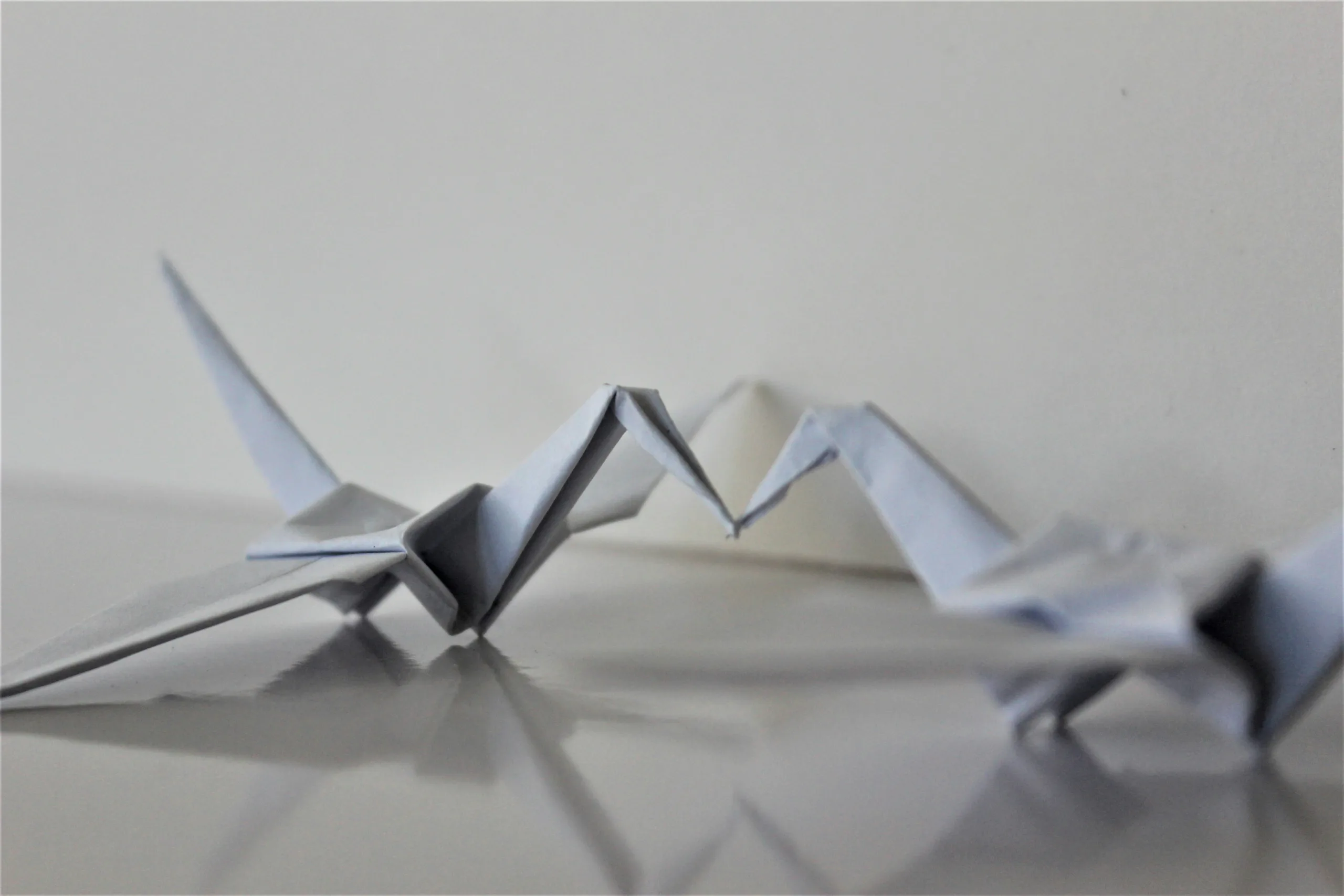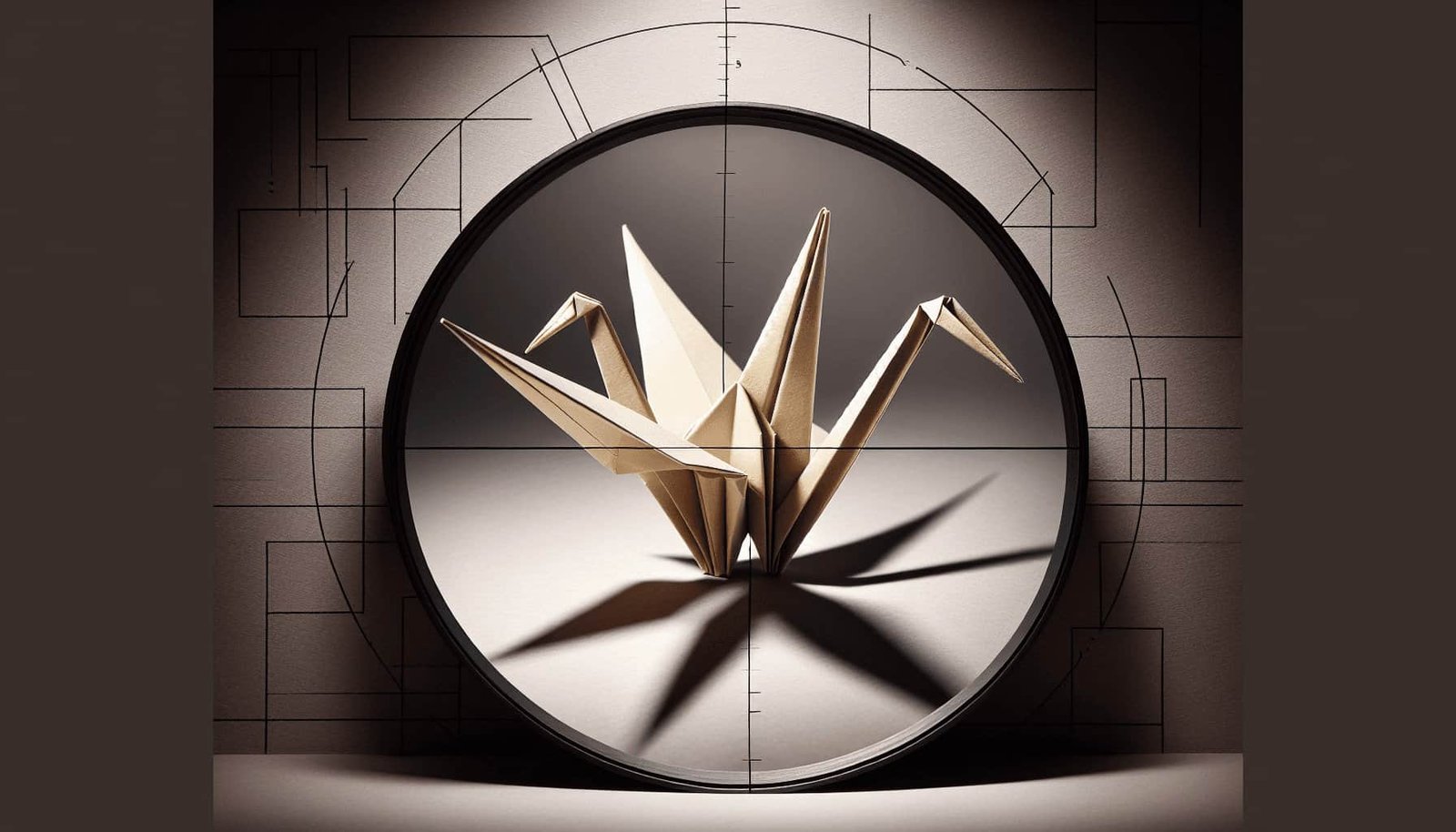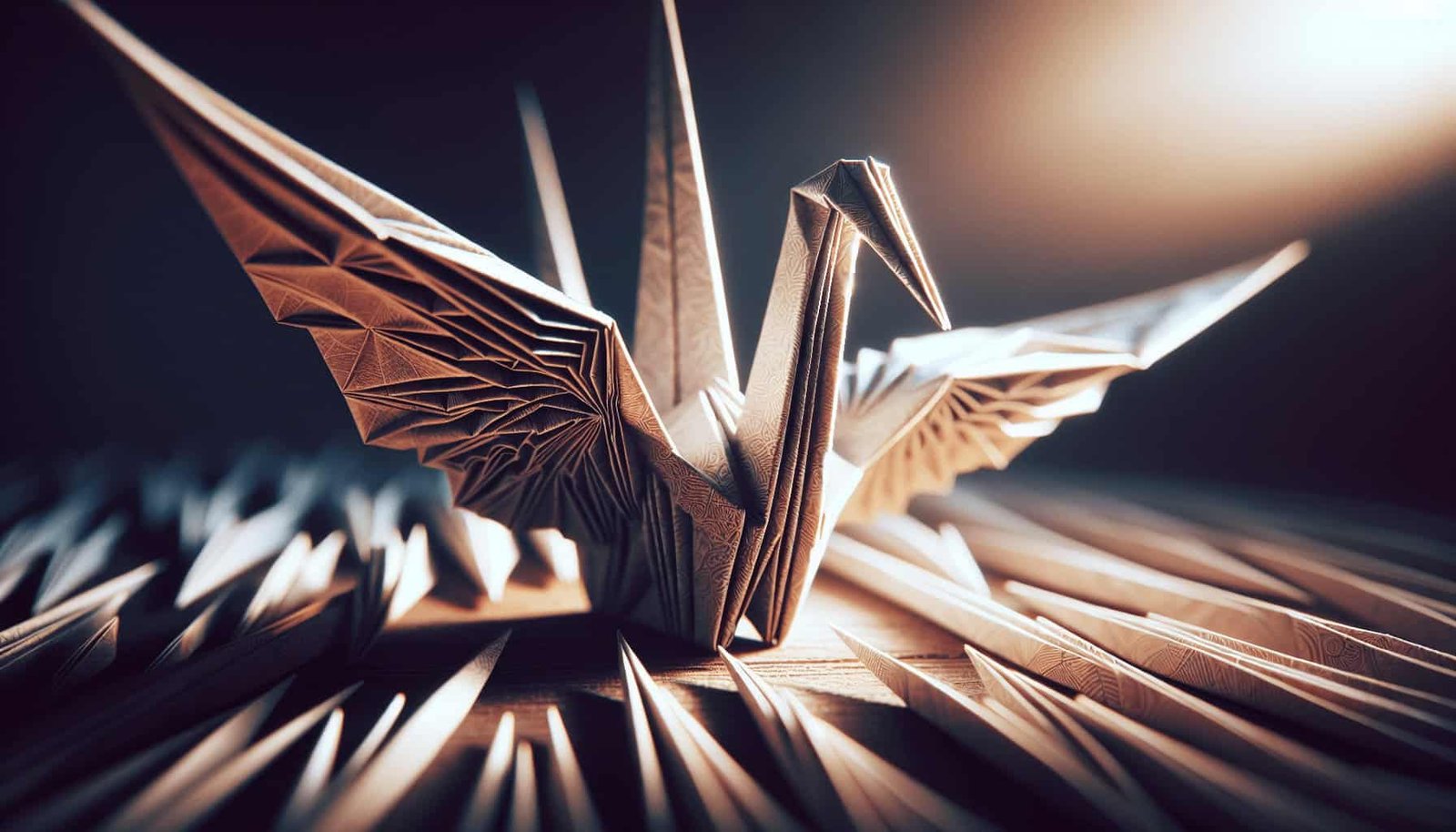Get ready to unleash your creativity with Origami Art Creation! In this captivating article, you will discover the enchanting world of origami and all it has to offer. From delicate paper folding techniques to stunning creations that will leave you in awe, this art form is sure to ignite your imagination. Whether you’re a seasoned origami enthusiast or completely new to this ancient Japanese craft, prepare to embark on a journey of self-expression and mindfulness. Let the transformation begin!
History of Origami
Introduction to Origami
Origami is the art of paper folding, which originated in Japan centuries ago. It involves creating intricate and beautiful designs out of a single sheet of paper, without any cutting or gluing. The word “origami” itself is derived from the Japanese words “ori” meaning fold, and “kami” meaning paper. This ancient art form has evolved over time, spreading beyond Japan’s borders and captivating people around the world with its elegance and creativity.
Origins of Origami in Japan
Origami’s roots lie in ancient Japan, with its exact origins dating back hundreds of years. Although the precise timeline is uncertain, the art of folding paper is believed to have originated during the 6th-century Heian period in Japan. Initially, origami was practiced mainly by the aristocrats and the samurai class, who enjoyed folding paper into intricate shapes as a form of entertainment.
As time passed, origami became more accessible to the general population, and the art form gained popularity during the Edo period (1603-1868). It was during this time that origami began to be used to create decorative objects, such as flowers and animals, for various traditional ceremonies and celebrations.
Spread of Origami beyond Japan
Origami started to gain international recognition in the 1900s, thanks to increased interactions between Japan and the rest of the world. The simplicity and beauty of origami captured the attention of artists, scientists, and mathematicians worldwide, leading to its widespread popularity.
The first book on origami, “Hiden Senbazuru Orikata” (The Secret of One Thousand Cranes Origami), was published in 1797 by Akisato Rito, further spreading knowledge about origami techniques. In the early 20th century, origami gained popularity in Europe and North America, as more people discovered its therapeutic benefits and artistic value.
Today, origami is practiced and appreciated by people from all walks of life, with enthusiasts and artists pushing the boundaries of the art form, creating stunning and innovative designs around the world.
Types of Origami
Traditional Origami
Traditional origami refers to the classic style of folding, where a single square sheet of paper is transformed into various shapes and figures. These designs often feature animals, flowers, and geometric shapes. Traditional origami emphasizes precision in folding techniques and follows a set of specific instructions.
Modular Origami
Modular origami involves creating models by joining multiple folded units together. Unlike traditional origami, modular origami uses several identical or similar shapes to create intricate, three-dimensional structures. These structures can range from simple geometric shapes to elaborate sculptures.
Wet-Folding Origami
Wet-folding is a technique that involves folding paper while damp, allowing for more flexibility and creating smoother curves and shapes. This technique is often used to create organic designs, such as animals or plants, where the added moisture helps in creating natural curves and textures.

Tools Required for Origami
Paper
The primary tool required for origami is paper. Traditionally, origami paper, also known as kami, is a square sheet of paper specifically designed for folding. It comes in various sizes, colors, and patterns, allowing artists to create a diverse range of origami models. However, origami can be done using any type of paper, as long as it can hold folds and maintain its shape.
Cutting Tools
While traditional origami does not involve cutting, some advanced origami designs may require the use of cutting tools for shaping intricate details or adding texture. Scissors or craft knives are commonly used for these purposes. However, it’s important to note that cutting is not a fundamental aspect of the art form.
Scoring Tools
Scoring tools are used to create precise and sharp folds in the paper. They are typically made of bone, metal, or plastic and are used to score along the intended folding lines before making the actual fold. Scoring helps create clean and crisp folds, especially when working with thick or stiff paper.
Basic Origami Techniques
Valley and Mountain Folds
Valley and mountain folds are the two fundamental folding techniques in origami. A valley fold is created by folding the paper inward, while a mountain fold is created by folding the paper outward. These folds create the basis for most origami models and are used to form creases that guide subsequent folds.
Pleating and Crimping
Pleating and crimping are techniques used to create multiple, parallel folds in the paper. Pleating involves folding the paper back and forth in an accordion-like manner, creating a series of evenly spaced folds. Crimping, on the other hand, involves folding the paper in a similar manner but with varying widths between folds, resulting in a textured 3D effect.
Squash and Reverse Folds
Squash and reverse folds are techniques used to manipulate existing folds and create new shapes within a model. A squash fold involves flattening a portion of the paper while maintaining the existing folds, resulting in a larger surface area. In contrast, a reverse fold involves folding a portion of the paper in the opposite direction, creating a new shape or feature.

Popular Origami Models
Paper Crane
The paper crane, also known as the origami crane, is one of the most iconic and widely recognized origami models. It holds a special place in Japanese culture and is often associated with hope, healing, and peace. Folding a paper crane is considered a symbol of good fortune and is often given as a gift or used as a decoration during various celebrations.
Origami Flowers
Origami flowers allow artists to recreate the beauty of blooming flowers using paper. There are various origami flower designs, ranging from simpler models like the origami lily or rose, to more intricate designs like the Kawasaki rose. These origami flowers can be used as standalone decorations, in bouquets, or as embellishments for greeting cards and crafts.
Kusudama
Kusudama is a traditional Japanese paper craft that involves folding multiple pieces of paper and assembling them into a spherical shape. These intricate folded balls can be used as decorative ornaments, hanging mobiles, or even as functional containers. Kusudama designs can be simple or highly complex, depending on the number of units and the arrangement of the individual pieces.
Origami as a Form of Therapy
Introduction to Origami Therapy
Origami therapy is the use of origami as a therapeutic tool to promote well-being and improve mental health. The act of folding paper in a mindful and deliberate manner can be a calming and meditative process, allowing individuals to focus their attention and reduce stress. Origami therapy is often used in various settings, including hospitals, rehabilitation centers, and mental health facilities.
Benefits of Origami Therapy
Origami therapy offers a range of benefits for individuals of all ages. Some of the key benefits include stress reduction, improved concentration and focus, enhanced fine motor skills and hand-eye coordination, and increased self-esteem and self-expression. Origami therapy can also serve as a form of creative expression, allowing individuals to explore their emotions and find a sense of accomplishment in completing a project.
Origami Therapy Techniques
In origami therapy, specially designed origami models and exercises are used to address specific therapeutic goals. These exercises may focus on improving concentration and attention by following complex folding sequences, enhancing fine motor skills by folding smaller or more intricate designs, or encouraging self-reflection and emotional expression through the creation of personalized origami models.

Origami in Science and Technology
Origami-inspired Engineering
Origami has inspired engineers and scientists to develop innovative solutions for various engineering and technological challenges. The principles of origami, such as folding patterns and structural stability, have been applied to fields like robotics, aerospace, and architecture. Origami-inspired engineering has led to the development of self-deployable structures, foldable solar panels, and adaptable robotic systems.
Origami in Medical Devices
Origami techniques have found applications in the field of medical devices and surgical tools. The ability to fold materials into compact shapes and unfold them when needed has led to the development of origami-inspired stents, heart valves, and drug delivery systems. These devices utilize the principles of origami to enhance their functionality, reduce invasiveness, and improve patient outcomes.
Origami in Space Exploration
Origami has also made its way into the realm of space exploration. The folding and unfolding capabilities of origami-inspired structures allow for more efficient transportation and deployment of equipment in space missions. Origami-inspired solar panels and antennas can be compactly folded during launch and then unfolded once in space, reducing the size and weight of payloads.
Origami in Fashion
Origami-inspired Clothing
Origami has influenced fashion designers to incorporate folded paper-inspired elements into clothing and accessories. Origami-inspired garments often feature intricate folds, pleats, and three-dimensional shapes that add a unique and avant-garde touch to the designs. From elaborate pleated gowns to avant-garde sculptural dresses, origami has become a source of inspiration for fashionistas around the world.
Origami Jewelry
Origami-inspired jewelry is another creative application of the art form. Small, intricate paper folds are transformed into delicate necklaces, earrings, and bracelets. These unique pieces of jewelry capture the essence of origami’s elegance and can be customized to suit personal style preferences. Origami jewelry adds a touch of charm and individuality to any outfit.
Origami Accessories
Origami-inspired accessories, such as handbags, wallets, and shoes, have also gained popularity. The structured and geometric shapes created through origami folds add a modern and minimalist aesthetic to these accessories. Origami-inspired accessories are not only fashionable but also functional, combining style with practicality.

Origami as a Decorative Art
Origami Wall Art
Origami wall art is a creative way to incorporate origami into home decor. Intricate origami designs are mounted on frames or shadow boxes and displayed as standalone decorative pieces or as part of a larger art installation. Origami wall art adds a unique and artistic touch to any space, showcasing the beauty and craftsmanship of folded paper.
Origami Mobiles
Origami mobiles are suspended structures made of multiple origami models attached to strings or wires. These mobiles can be hung from the ceiling or displayed as wall decorations, adding movement and visual interest to any room. Origami mobiles are often used in nurseries or children’s rooms, introducing young minds to the wonders of origami and stimulating their imagination.
Origami Lampshades
Origami lampshades combine functionality and aesthetics, creating beautiful and captivating lighting fixtures. The folded paper designs create unique patterns and shadows when illuminated, adding a cozy and artistic ambiance to any space. Origami lampshades come in various shapes and sizes, catering to different interior design styles and preferences.
Origami for Special Occasions
Origami Wedding Decorations
Origami can add a touch of elegance and personalization to wedding celebrations. Folding paper cranes, flowers, or modular origami units can be used as decorative elements for centerpieces, bouquets, and table settings. Origami can also be incorporated into wedding invitations, creating a unique and memorable way to invite guests to the special day.
Origami Christmas Ornaments
Origami Christmas ornaments are a festive and eco-friendly alternative to traditional decorations. From paper snowflakes and stars to intricate origami angels and Santas, there are endless possibilities for creating unique and personalized ornaments. Folding origami ornaments can be a fun family activity during the holiday season, bringing joy and creativity to the festivities.
Origami Birthday Cards
Origami birthday cards are a delightful way to send personalized greetings to loved ones. Folding origami animals, flowers, or simple geometric shapes can be attached to the front of a card, adding a special touch to the birthday wishes. Handmade origami birthday cards showcase thoughtfulness and creativity, making them cherished keepsakes for the recipients.
Origami is a versatile art form that has captivated people for centuries. From its ancient origins in Japan to its modern applications in various fields, origami continues to inspire creativity and bring joy to people of all ages. Whether it’s folding paper cranes, creating intricate structures, or using origami as a therapeutic tool, there is no limit to the possibilities when it comes to this timeless art. So go ahead, grab a sheet of paper, and let your imagination take flight in the world of origami.

